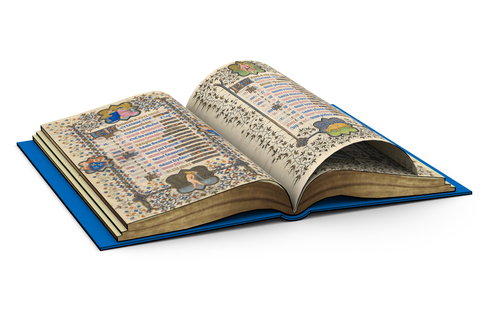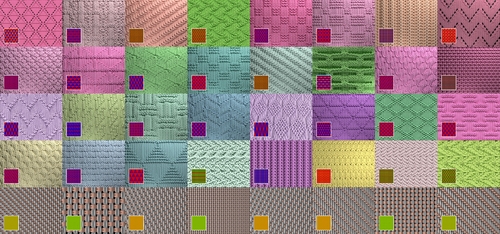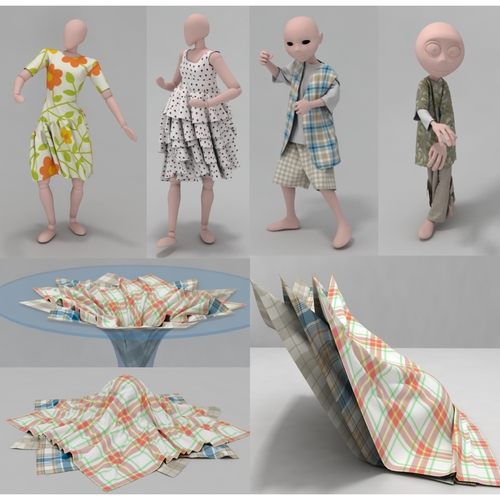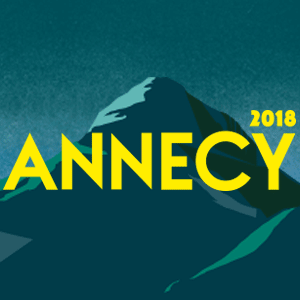-
 Full Conference Pass (FC)
Full Conference Pass (FC)
-
 Full Conference One-Day Pass (1D)
Full Conference One-Day Pass (1D)
Date: Wednesday, December 5th
Time: 4:15pm - 6:00pm
Venue: Hall B5(1) (5F, B Block)
Session Chair(s): Moritz Baecher, Disney Research, Switzerland
Inverse Elastic Shell Design with Contact and Friction
Abstract: We propose an inverse strategy for modeling thin elastic shells physically, just from the observation of their geometry. Our algorithm takes as input an arbitrary target mesh, and interprets this configuration automatically as a stable equilibrium of a shell simulator under gravity and frictional contact constraints with a given external object. Unknowns are the natural shape of the shell (i.e., its shape without external forces) and the frictional contact forces at play, while the material properties (mass density, stiffness, friction coefficient) can be freely chosen by the user. Such an inverse problem formulates as an ill-posed nonlinear system subject to conical constraints. To select and compute a plausible solution, our inverse problemsolver proceeds in two steps. In a first step, contacts are reduced to frictionless bilateral constraints and a natural shape is retrieved using the adjoint method. The second step uses this result as an initial guess and adjusts each bilateral force so that it projects onto the admissible Coulomb friction cone, while preserving global equilibrium. To better guide minimization towards the target, these two steps are applied iteratively on a degressive regularization of the shell energy. We validate our approach on simulated examples with reference material parameters, and show that our method still converges well for material parameters lying within a reasonable range around the reference, and even in the case of arbitrary meshes that are not issued from a simulation. We finally demonstrate practical inversion results on complex shell geometries freely modeled by an artist or automatically captured from real objects, such as posed garments or soft accessories.
Authors/Presenter(s): Mickaël Ly, Inria, France
Romain Casati, Inria, France
Florence Bertails-Descoubes, Inria, France
Melina Skouras, Inria, France
Laurence Boissieux, Inria, France

Interactive Design of Periodic Yarn-Level Cloth Patterns
Abstract: We describe an interactive design tool for authoring, simulating, and adjusting yarn-level patterns for knitted and woven cloth. To achieve interactive performance for notoriously slow yarn-level simulations, we propose two acceleration schemes: (a) yarn-level periodic boundary conditions that enable the restricted simulation of only small periodic patches, thereby exploiting the spatial repetition of many cloth patterns in cardinal directions, and (b) a highly parallel GPU solver for efficient yarn-level simulation of the small patch. Our system supports interactive pattern editing and simulation, and runtime modification of parameters. To adjust the amount of material used (yarn take-up) we support ``on the fly'' modification of (a) local yarn rest-length adjustments for pattern specific edits, e.g., to tighten slip stitches, and (b) global yarn length by way of a novel yarn-radius similarity transformation. We demonstrate the tool's ability to support interactive modeling, by novice users, of a wide variety of yarn-level knit and woven patterns. Finally, to validate our approach, we compare dozens of generated patterns against reference images of actual woven or knitted cloth samples, and we release this corpus of digital patterns and simulated models as a public dataset to support future comparisons.
Authors/Presenter(s): Jonathan C. Leaf, Stanford University, United States of America
Rundong Wu, Cornell University, United States of America
Eston Schweickart, Cornell University, United States of America
Doug James, Stanford University, Pixar Animation Studios, United States of America
Steve Marschner, Cornell University, United States of America

Learning a Shared Space for Multimodal Garment Design
Abstract: Designing real and virtual garments is becoming extremely demanding with rapidly changing fashion trends and increasing need for synthesizing realistic digital humans for various applications. This necessitates designing simple and effective workflows to facilitate creating sewing patterns customized to garment and target body shapes to achieve desired looks. Traditional workflow involves a trial-and-error procedure wherein a mannequin is draped to judge the resultant folds and the sewing pattern iteratively adjusted until a desired look is achieved. This requires time and experience. Instead, we present a data-driven approach wherein the user directly indicates desired fold patterns simply by sketching while our system estimates corresponding garment and body shape parameters at interactive rates. The recovered parameters can then be further edited and the updated draped garment previewed. Technically, we achieve this via a novel shared latent space that allows the user to seamlessly specify desired characteristics via multimodal input without requiring to run garment simulation at design time. We qualitatively and quantitatively evaluate our approach and demonstrate how our system can generate a rich quality of on-body garments targeted for a range of body shapes while achieving desired fold characteristics.
Authors/Presenter(s): Tuanfeng Wang, UCL, United Kingdom
Duygu Ceylan, Adobe Research, United States of America
Jovan Popovic, Adobe Research, United States of America
Niloy Mitra, UCL, United Kingdom

I-Cloth: Incremental Collision Handling for GPU-Based Interactive Cloth Simulation
Abstract: We present an incremental collision handling algorithm for GPU-based interactive cloth simulation. Our approach exploits the spatial and temporal coherence between successive iterations of an optimization-based solver for collision response computation. We present a novel incremental continuous collision detection algorithm that keeps track of deforming vertices along with spatial hashing. We use a non-linear GPU-based impact zone solver to resolve the penetrations. We combine our collision handling algorithm with implicit integration to use large time steps. Our overall algorithm, I-Cloth, can simulate complex cloth deformation with a few hundred thousand vertices at 2-8 frames per second on a commodity GPU. We highlight its performance on different benchmarks and observe up to 7-10X speedup over prior algorithms.
Authors/Presenter(s): Min Tang, Zhejiang University, China
Tongtong Wang, Zhejiang University, China
Zhongyuan Liu, Zhejiang University, China
Ruofeng Tong, Zhejiang University, China
Dinesh Manocha, UNC at Chapel Hill, United States of America




